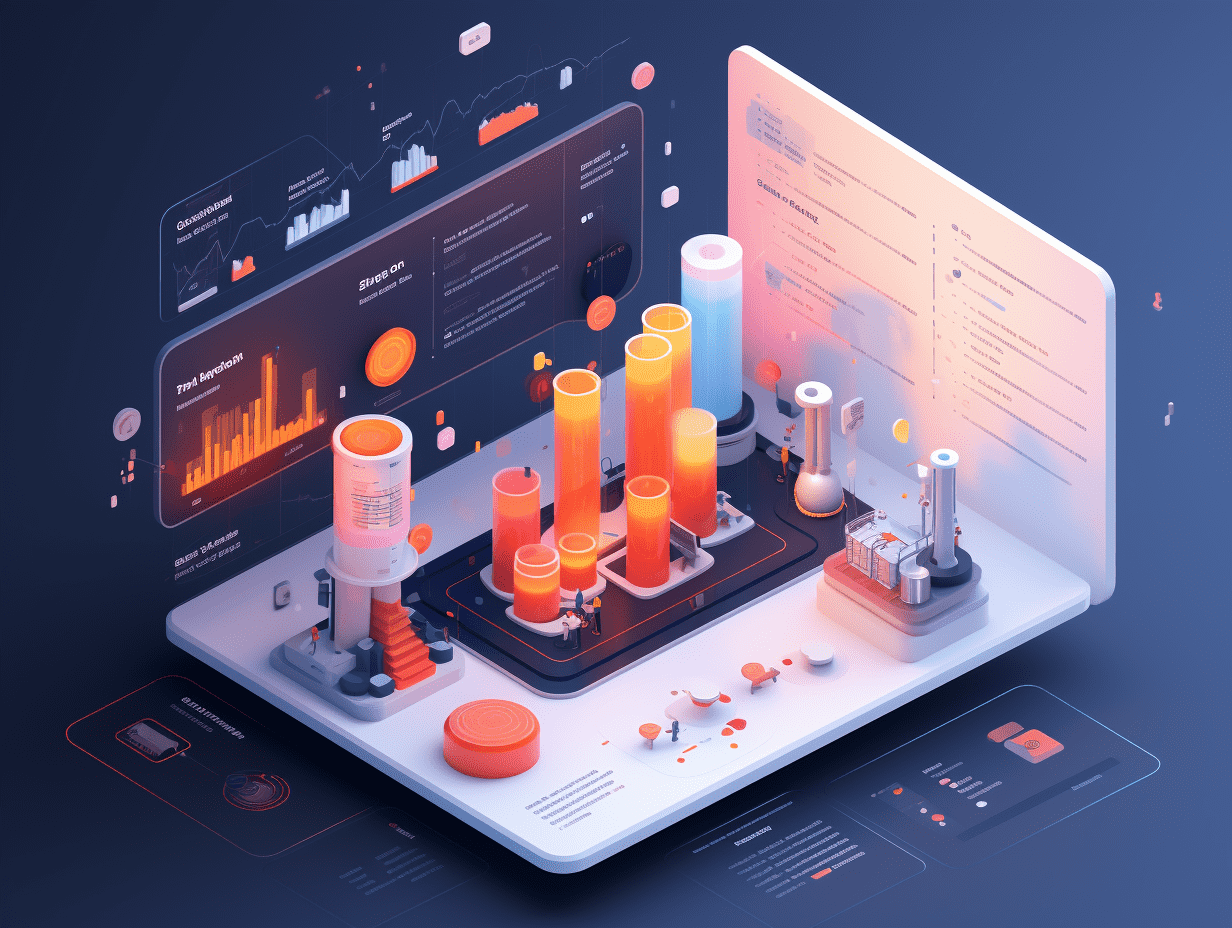Zhongtai: Building materials industry shows signs of bottoming out in the up cycle, focusing on growth realization of pharmaceutical glass, etc.
The real estate sector continues to face pressure, and there has been some structural differentiation in various sub-sectors of building materials when looking at quarterly breakdowns.
Zhongtai released a research report stating that the real estate sector in 24H1 continued to be under pressure. In terms of quarterly segmentation, there was some structural differentiation in the building materials sector: with the gradual easing of credit impairment pressure and adjustments such as channel structure optimization, the profitability level of brand building materials sector in 24Q2 showed a slight improvement compared to the previous quarter. The cement sector also showed some recovery in profitability on a quarterly basis due to increased industry coordination efforts and price adjustments. The glass fiber sector faced pressure on profits due to volume increase and price decline, but with the progress of price recovery and the rebound in export prospects, the profit decline in 24Q2 narrowed, showing a noticeable improvement on a quarterly basis. The pharmaceutical glass sector had excellent performance, with continuous realization of performance release driven by product upgrades and cost reduction trends, highlighting the advantages of leading companies in molded bottles.
1. Brand Building Materials: Further downturn in prosperity, strong resilience in leading companies
Zhongtai selected 17 companies as samples, with a total year-on-year revenue and net profit after deducting non-operating expenses of -5.9% and -23.1% respectively in the brand building materials sector in 24Q2. Against the backdrop of declining demand and intensified competition, leading companies in the C-end sector maintained relatively good resilience. In terms of profitability, the gross margin of the brand building materials sector companies in 24Q2 was 28.3%, a decrease of 1.0 percentage points year-on-year but an increase of 1.1 percentage points quarter-on-quarter. The return on equity/net profit margin were 8.5% and 8.0% respectively, a decrease of 1.8 percentage points year-on-year but an increase of 3.5 percentage points and 4.2 percentage points quarter-on-quarter, showing a year-on-year decline and a quarter-on-quarter improvement in profitability, mainly attributed to channel structure optimization, internal cost savings, and the decline in raw material costs. In 24H1, companies took the initiative to reduce receivables risks with receivables accounting for 77.4% of revenue, a decrease of 3.1 percentage points year-on-year.
2. Cement & Water Reducers: Consolidating the bottom, awaiting recovery
1) Cement: National cement production decreased by 10.0% year-on-year in 24H1 and by 6.7% year-on-year in 24Q2, with a slight reduction in the year-on-year decline in production. The revenue of sample companies in 24H1 decreased by 25.3% year-on-year, with a net loss of 800 million yuan, a shift from profit to loss year-on-year; the total revenue/net profit year-on-year of the cement sector in 24Q2 was -24%/-86%, achieving a net profit of 990 million yuan, with a positive quarter-on-quarter turn, strengthening of self-regulation in the industry and reduction of production in the second quarter, with a national average cement price increase of 1.6% quarter-on-quarter, resulting in a quarter-on-quarter improvement in gross profit rate and net profit rate of most cement enterprises in 24Q2. With the tightening of off-peak production measures in 24H2 and the decline in coal prices, companies are expected to continue to recover profit. Top companies in 24H1 such as Huaxin Cement and Anhui Conch Cement achieved good growth in overseas cement sales and non-cement businesses, which to some extent offset the impact of the decline in domestic cement demand.
2) Water Reducers: Impacted by the decline in demand, the revenue/net profit of the water reducer sector in 24Q2 decreased by 19%/53% year-on-year. The price of water reducers continued to decline in 24Q2, while the average price of epoxy ethane on the cost side slightly rebounded, and industry profitability is expected to recover with the recovery in demand.
3. Glass Fiber: Bottoming out, industry development entering a new normal
In 24H1, the revenue/net profit after deducting non-operating expenses of listed companies in the glass fiber sector decreased by 9.9% and 66.3% year-on-year, respectively. In 24Q2, the decrease was 14.8% and 62.2% year-on-year, respectively. With a slight recovery in exports and domestic sales, company profits narrowed year-on-year, with a significant improvement in profitability on a quarterly basis. Coarse yarn and electronic yarn started to recover in late March and mid-April, laying a solid foundation for the bottoming out of the industry and price recovery leading to gradual improvement in quarterly performance.
4. Glass: Pharmaceutical glass accelerating growth, photovoltaics continuing to grow; float glass under pressure quarter by quarter
1) Pharmaceutical glass: In 24Q2, the upgrade of borosilicate products accelerated, with a year-on-year profit increase of 20% for sector companies, combined with a decrease in raw material costs. The gross profit margin/net profit margin of industry companies in 24Q2 increased by 4 percentage points/3 percentage points quarter-on-quarter. As the prosperity continues to increase and costs further decrease, the profitability of leading molded bottle companies in 24H2 is expected to accelerate.
2) Photovoltaic glass: The net profit of listed companies in the photovoltaic glass sector increased by 28% year-on-year in 24H1, with a slight price increase in 24Q2. The industry's profitability improved slightly, with a gross profit margin of 20% for sector companies, an increase of 3 percentage points quarter-on-quarter. The industry's profitability may face pressure in the third quarter of 24Q3 as the supply and demand equilibrium is re-established.
3) Float glass: Weak demand and declining prices led to a 20% year-on-year decline in profitability for sector companies in 24Q2, with a quarterly gross profit margin/net profit margin of 21%/8%, down 1 percentage point/2 percentage points quarter-on-quarter. With the accelerated decline in float prices, the industry is still in need of further supply-demand rebalancing.
5. Investment recommendations and risk considerations
1) Investment recommendations: Pharmaceutical glass sector continues to prosper, pay attention to unexpected cost reductions; Cement market prices are expected to rise in the peak season, anticipating performance and valuation recovery of sector and leading companies; The glass fiber industry is clearly bottoming out, take advantage of low points to exchange time for space; Brand building materials sector is at the stage of seeking bottom in performance and valuation; Float glass and photovoltaic glass supply sides are still waiting for digestion, pay attention to the inflection point of industry supply and demand.
2) Risk considerations: Demand falls short of expectations; deterioration in cash flow; sharp increase in raw material prices; deviations between data and actual circumstances; risks of lagging or untimely updates in information.
Related Articles

On December 15, BAIRONG-W (06608) spent HKD 2.1819 million to repurchase 23,300 shares.

Decai Decoration (605287.SH): Chenggao Century plans to reduce its shareholding by no more than 3%.

Shenzhen YHLO Biotech (688575.SH) subsidiary obtains medical device registration certificate.
On December 15, BAIRONG-W (06608) spent HKD 2.1819 million to repurchase 23,300 shares.

Decai Decoration (605287.SH): Chenggao Century plans to reduce its shareholding by no more than 3%.

Shenzhen YHLO Biotech (688575.SH) subsidiary obtains medical device registration certificate.

RECOMMEND

Valued At $10 Trillion, The Largest IPO In History Is Coming As SpaceX Announces Listing Plan
12/12/2025

Five Imperatives And Eight Tasks: Central Meeting Specifies Next Year’s Economic Work, Highlights Identified
12/12/2025

Over 100 New Listings In Hong Kong This Year As Total Fundraising Tops HKD 270 Billion, Eighteen “A+H” Dual Listings
12/12/2025


